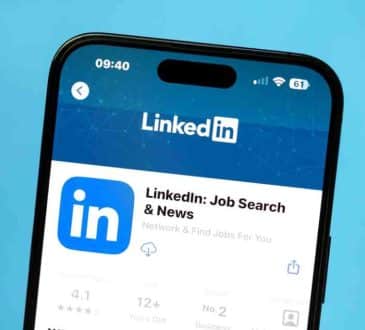In 2020, socially conscious marketing has taken over — for good

In the midst of a recession and a huge spike in unemployment this year, you might think that discounts and low prices would be the ultimate way to win over consumers. But my experience working with household name brands has shown me otherwise.
What’s happening in the world of marketing is at once surprising to some business leaders and heartening in what it shows about American consumers. More than ever, socially conscious marketing is the key to success. For companies that do it right, this kind of marketing provides the differentiation that shoppers are looking for and longevity to help the business withstand tumultuous times.
It boils down to an understanding of today’s consumer mindset. People want corporations to support causes that matter — and they want to decide which causes those are.
Take a $25 billion retailer that my team at Givz works with. They offered to make a $10 contribution for every $60 a shopper spent. The offer attracted at least as many people as discounts did, if not more. And it came at a fraction of the cost. After completing their shopping, consumers were sent an email offering them the chance to choose any charity to donate the contribution to. It became the most opened email the company had ever sent, with an engagement rate of approximately seven times their average.
Not everyone ends up taking advantage of the offer. About 30% of recipients opened the email, and about half put the offer to use. So, simple math shows why this campaign provided much greater bang for the buck. Rather than automatically applying a $10 discount to purchases, the company got just as much business, or more, through this charity offer. What would have cost them, say, $1 million in discounts ended up instead costing them $150,000 in charitable contributions.
This retailer’s experience was typical for what I’ve been seeing in recent years. Another company, a multi-million dollar cosmetics brand, ran similar campaigns across three separate months this year — and saw a huge jump in purchases each time.
Back in January, the World Economic Forum declared that we are all living in “the age of the conscious consumer.” Since then, as the COVID-19 pandemic has created so much upheaval, a slew of surveys have shown this change accelerating, with more people than ever looking for businesses to give back in meaningful ways.
Conversations with consumers who take part in these marketing campaigns have shown me what’s helping this kind of giving thrive in a year filled with not just the pandemic, but also widespread protests against racism.
Consumers have become more conscious of their own spending. People are not only aware of their financial struggles; they’re aware of what they have, and aware that so many other people are in much worse circumstances. Consumers are thinking every day about the doctors and nurses who are risking their lives to save COVID patients. They’re thinking about front-line workers who are keeping critical infrastructure and services running. They’re thinking about the protesters who are standing up for equality and against brutality.
Consumers are grateful for their own ability to buy things they need — and, in some cases, things they want. When a business shows that it shares their commitment to causes, these consumers gravitate toward the brand. They feel a sense of kinship. It helps build loyalty. (This is especially the case when certain companies offer to match contributions dollar for dollar, up to a maximum.)
You may wonder why companies don’t simply announce that they’ll make their own contributions to charities. This is where consumer choice comes in. People care about a myriad of causes. Ask 1,000 of your customers to name the top three charities they want to support, and you’re likely to get hundreds of different answers. When customers are given the chance to choose, they get involved at much higher levels.
A study published in the Journal of Marketing put this to the test in a field experiment involving candy sold at a roller skating rink. People spent far more when they were allowed to choose a cause to receive a donation than they did when the rink chose where to donate the money. On average, those who got to choose paid $2.17 for candy; when the rink chose the charity, consumers spent 72 cents for the same amount of candy. The discovery, in a nutshell: “Allowing consumers to select the cause in a CM (cause-related marketing) campaign is more likely to enhance perceived personal role and, thus, purchase intentions.”
There’s no question that many businesses are ready to make giving a bigger part of their operations than ever. A recent study from Aflac found that although “56% of business executives claim moderate to significant negative company revenue impact due to the COVID-19 epidemic, 74% are willing to significantly or moderately increase corporate giving going forward.”
The key is to do it in a way that’s a win across the board — increasing revenue, providing customers what they’re looking for, and helping all sorts of charities.
Commentary by Andrew Forman. Here’s what you’ve missed?
World’s Best Countries For Entrepreneurship.
World’s Trendiest Countries.
World’s Best Countries For Investment In E-commerce And Digital Sector.
Add CEOWORLD magazine to your Google News feed.
Follow CEOWORLD magazine headlines on: Google News, LinkedIn, Twitter, and Facebook.
Copyright 2024 The CEOWORLD magazine. All rights reserved. This material (and any extract from it) must not be copied, redistributed or placed on any website, without CEOWORLD magazine' prior written consent. For media queries, please contact: info@ceoworld.biz









